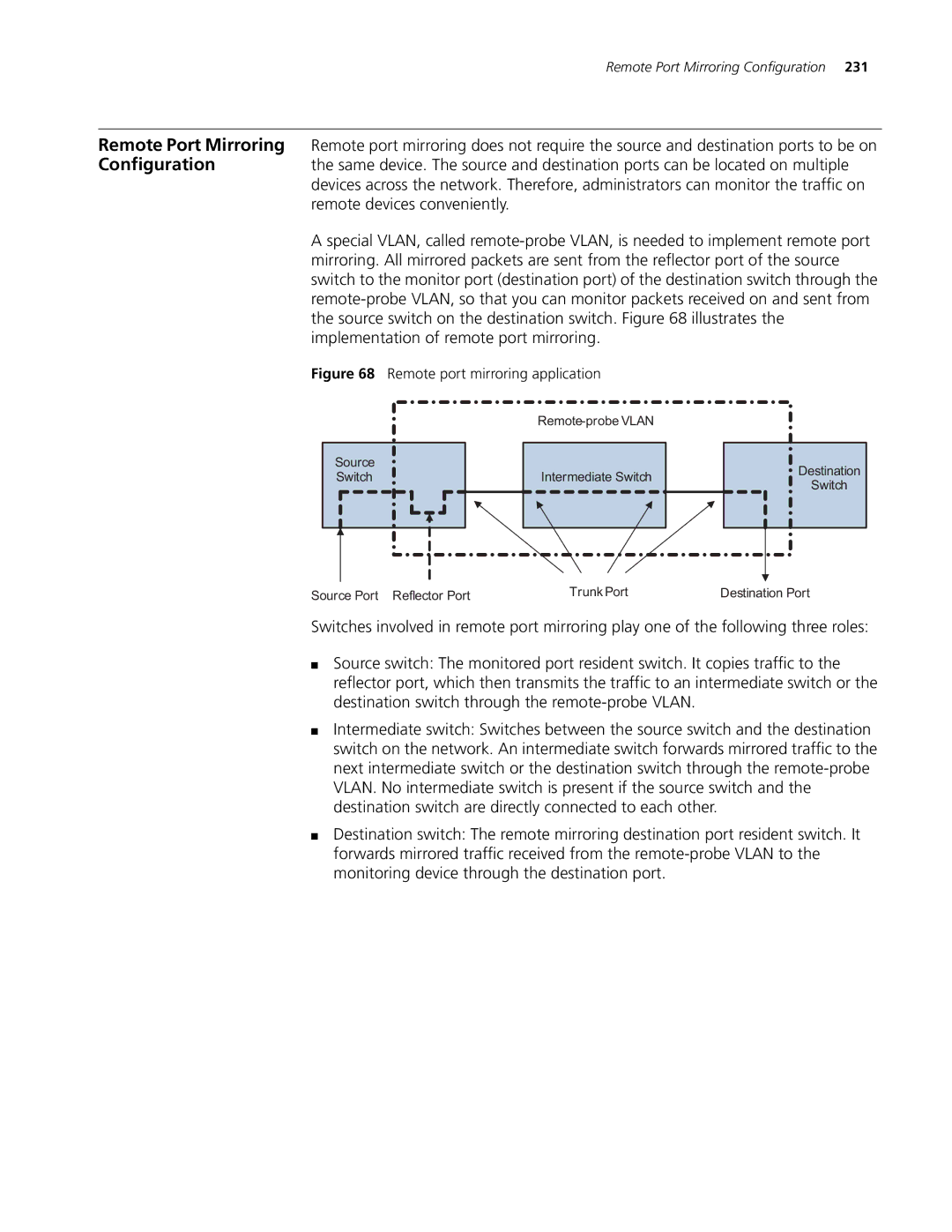
Remote Port Mirroring Configuration 231
Remote Port Mirroring Remote port mirroring does not require the source and destination ports to be on
Configuration the same device. The source and destination ports can be located on multiple devices across the network. Therefore, administrators can monitor the traffic on remote devices conveniently.
A special VLAN, called
Figure 68 Remote port mirroring application
Source Switch
Intermediate Switch
![]() Destination
Destination
Switch
Source Port Reflector Port | Trunk Port | Destination Port |
Switches involved in remote port mirroring play one of the following three roles:
■Source switch: The monitored port resident switch. It copies traffic to the reflector port, which then transmits the traffic to an intermediate switch or the destination switch through the
■Intermediate switch: Switches between the source switch and the destination switch on the network. An intermediate switch forwards mirrored traffic to the next intermediate switch or the destination switch through the
■Destination switch: The remote mirroring destination port resident switch. It forwards mirrored traffic received from the
